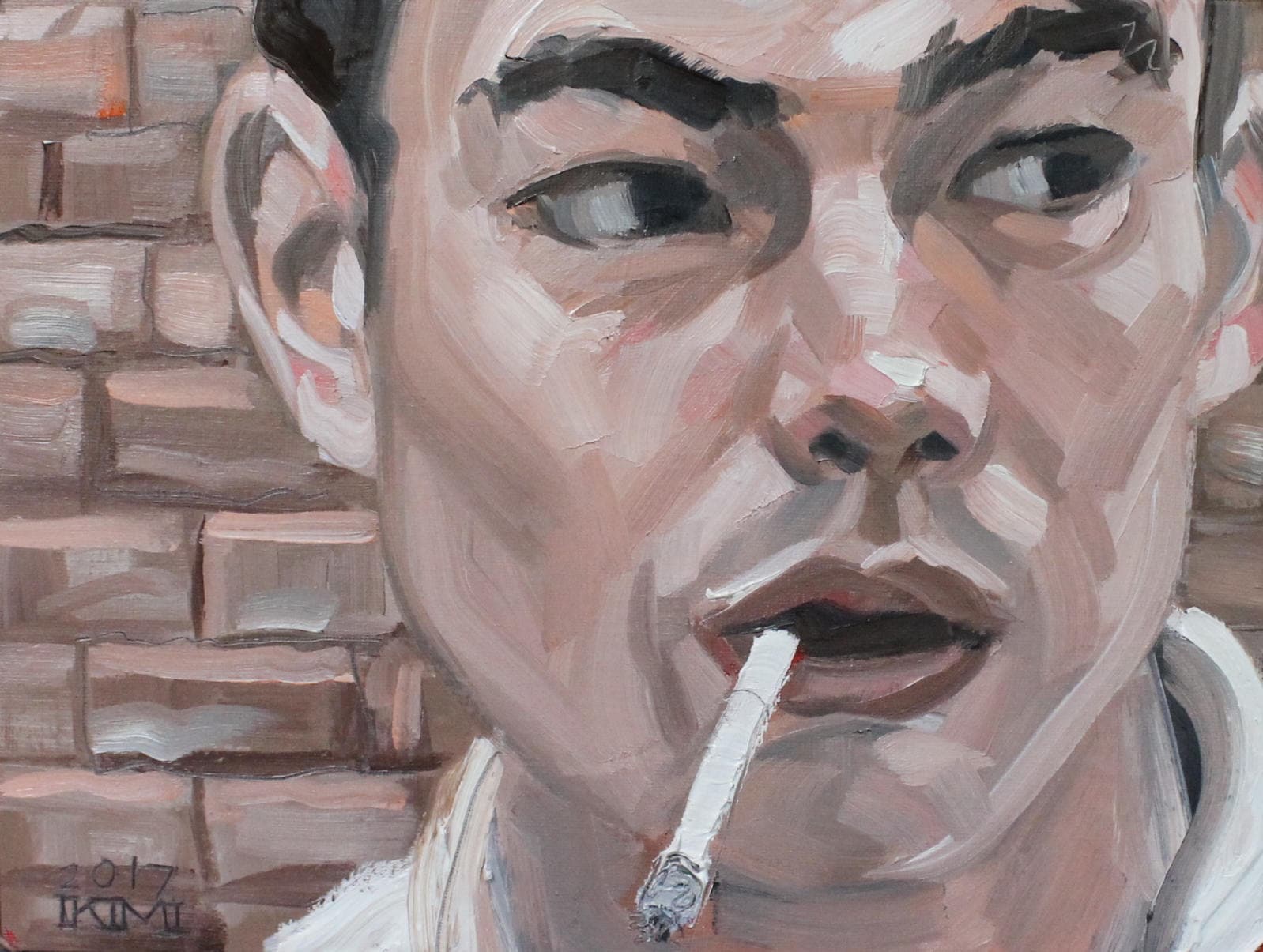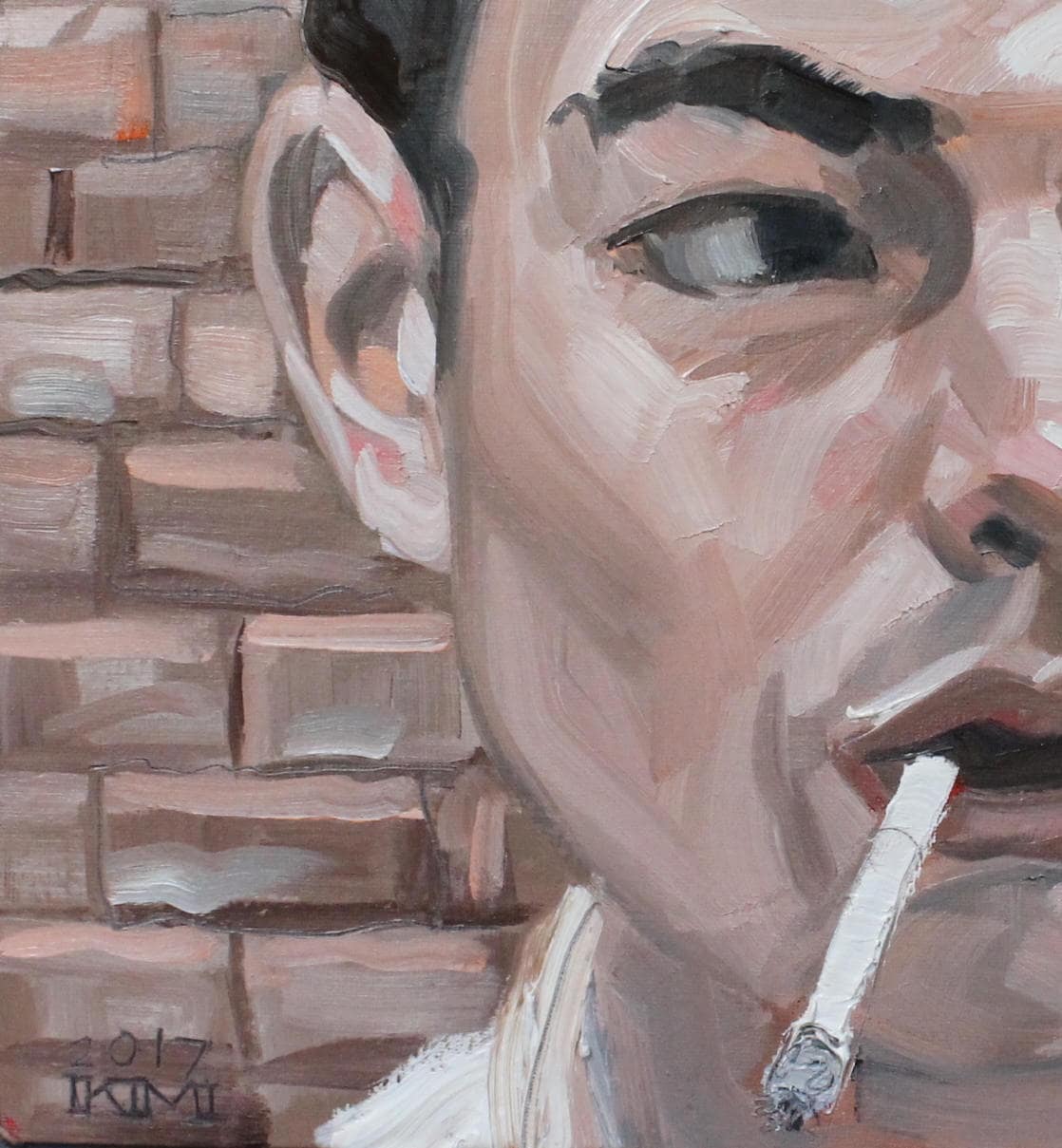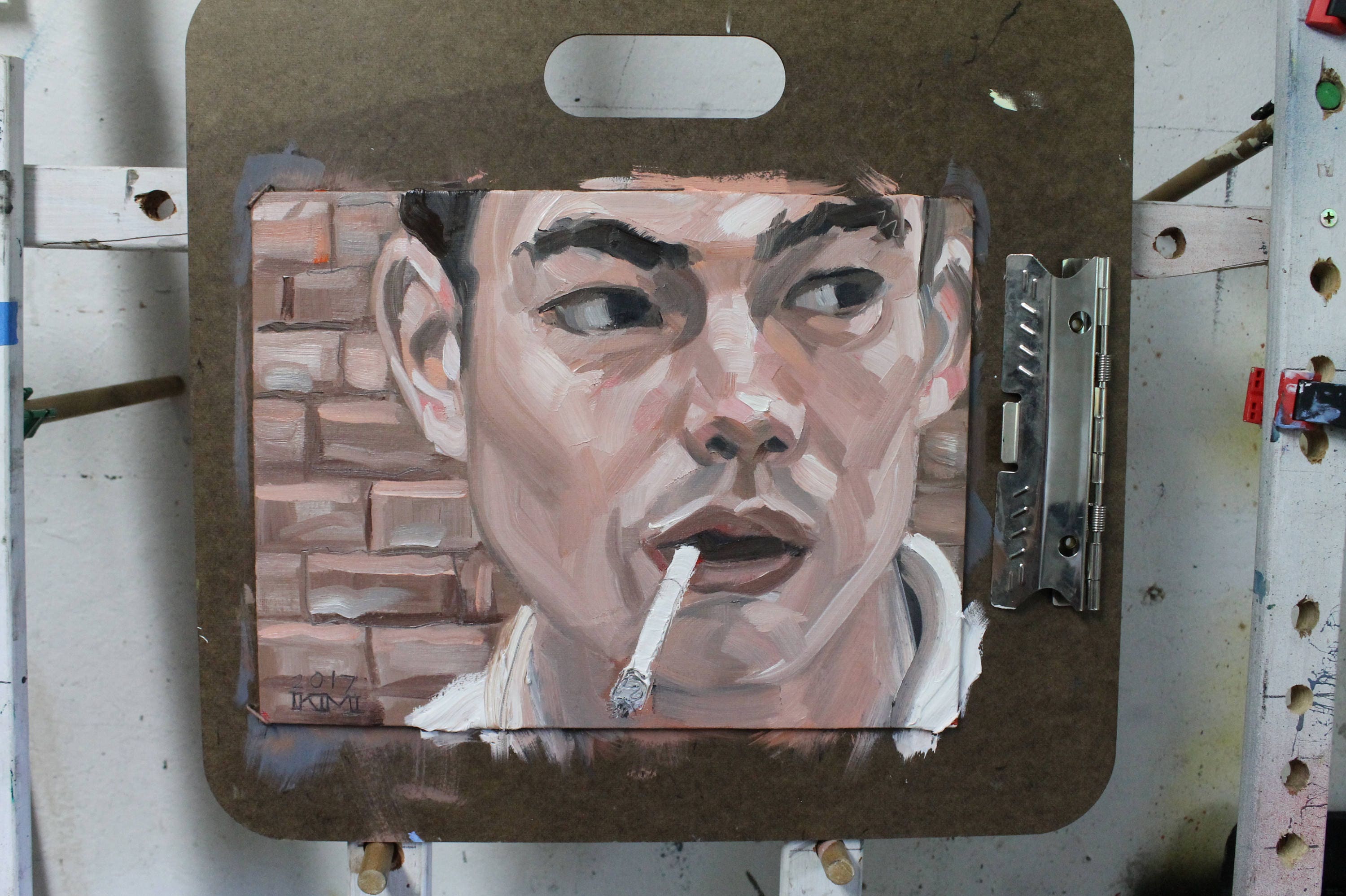Friday
Thursday
California ArtBeat
| ||||||||||||||||||||||||||||||||||||||||||||||||||||||
What You Should Know about George Bellow’s Boxing Paintings
Probably the most important reason why this painting is important to look at is because it tells us a lot about New York City in the early 20th century.
For example, George Bellows was an artist who lived in New York at the early part of the 20th century and was part of a school of artists called “ashcan.”
The artists of the Ashcan School of Art were named after painting subject matter that was from the gutter or from the trash can which were the streets of New York. One of the things that’s talked about in fiction created in the early 1900s at about that era have a lot to do with literally slugging it out to make your fortune in New York City. Artists are often susceptible to seeing the era they are living in in a romantic way and George Bellows was one of those artists who enjoyed living in the early 1900s and the energy of it.
The subject matter of these two paintings is literally what today would be called “cage fighting.” Cage fighting and boxing have a similar history in that they began first as illegal activities, also sort of like cockfighting, however, the participants in it attempted to make it somehow legitimate or legal. It was illegal to fight in New York City in the early 1900s and to sell tickets to an exhibition of fighting, so the fight promoters got around it by selling one-night memberships to a club in which the club members were invited to box. It was basically a way of stepping around the law and that’s why this painting is called “Both Members of This Club.”
The physical stuff of how George Bellows paints this and similar boxing scenes, is part of what you should know about this painting. The paint in it is super thick and applied in what looks like quick or slathered on layers that aren’t photorealistic. The (impasto) thickness of the paint, especially where light hits it, is a way of representing the light as stronger in the picture. In the backgrounds of each painting, you would, if you can see this in real life, and see that the texture is much less and the paint is actually thinner in the darker areas. Wherever like it’s a figure or person, the artist thickens up the paint. This gives the painting a kind of skin physical presence.
The cartoon or gestural quality of how the figures are painted and the faces of the audience are painted is also part of one of the qualities of the ashcan school of art in that it is a kind of exaggeration caricatures of the emotions of these dark people watching a violent brawl. Bellows draws the faces in the figures in a way it’s very similar to another “realist” or artist to show the grittier side of life, Honoré Daumier.
Another thing that makes George Bellows' paintings something that should know about is that the subject matter and the thick and thin of the painting and the energy in which it was painted probably had some influence on other artists who came after him such as Jackson Pollock. There seems to be a sort of common thread tween artists like Jackson Pollock, Thomas Hart Benton, and George Bellows.
For example, George Bellows was an artist who lived in New York at the early part of the 20th century and was part of a school of artists called “ashcan.”
The artists of the Ashcan School of Art were named after painting subject matter that was from the gutter or from the trash can which were the streets of New York. One of the things that’s talked about in fiction created in the early 1900s at about that era have a lot to do with literally slugging it out to make your fortune in New York City. Artists are often susceptible to seeing the era they are living in in a romantic way and George Bellows was one of those artists who enjoyed living in the early 1900s and the energy of it.
The subject matter of these two paintings is literally what today would be called “cage fighting.” Cage fighting and boxing have a similar history in that they began first as illegal activities, also sort of like cockfighting, however, the participants in it attempted to make it somehow legitimate or legal. It was illegal to fight in New York City in the early 1900s and to sell tickets to an exhibition of fighting, so the fight promoters got around it by selling one-night memberships to a club in which the club members were invited to box. It was basically a way of stepping around the law and that’s why this painting is called “Both Members of This Club.”
The physical stuff of how George Bellows paints this and similar boxing scenes, is part of what you should know about this painting. The paint in it is super thick and applied in what looks like quick or slathered on layers that aren’t photorealistic. The (impasto) thickness of the paint, especially where light hits it, is a way of representing the light as stronger in the picture. In the backgrounds of each painting, you would, if you can see this in real life, and see that the texture is much less and the paint is actually thinner in the darker areas. Wherever like it’s a figure or person, the artist thickens up the paint. This gives the painting a kind of skin physical presence.
The cartoon or gestural quality of how the figures are painted and the faces of the audience are painted is also part of one of the qualities of the ashcan school of art in that it is a kind of exaggeration caricatures of the emotions of these dark people watching a violent brawl. Bellows draws the faces in the figures in a way it’s very similar to another “realist” or artist to show the grittier side of life, Honoré Daumier.
Another thing that makes George Bellows' paintings something that should know about is that the subject matter and the thick and thin of the painting and the energy in which it was painted probably had some influence on other artists who came after him such as Jackson Pollock. There seems to be a sort of common thread tween artists like Jackson Pollock, Thomas Hart Benton, and George Bellows.
Wednesday
Tuesday
Monday
Sunday
Saturday
| |||||||||||||||||||||||||
|
The Great Wall, oil on canvas panel 11x14 inches by Kenney Mencher
11x14 oil on canvas panel
FREE SHIPPING
I PAY THE SALES TAX
Shipping takes 3-4 Weeks
This is on acid free paper and archival black artist's crayon.
This painting began with a black and white drawing and then I developed it with alternating layers of watercolor and crayon.
The technique I use is archival and will not smudge easily like charcoal and pastel. It is very resistant to fade although you should never hang a watercolor in direct light from a window unless the light is muted. Glass really helps to preserve color and will keep the drawing fresher.
The crayon I use is very permanent and will not blur, smudge or rub off.
The size is a standard US frame size and can be framed inexpensively.
(Buy framing kits on the US version of Amazon or go to DickBlick.com)
I try to make really well crafted work about the human figure and the human condition. I like to focus on the kind of beauty for both men and women that is "non-standard."
I'm always looking at unusual looking people and seeing the beauty in them.
If you would like to learn more about me please visit my website:
http://kenney-mencher.com/<br /> Kenney Mencher
FREE SHIPPING
I PAY THE SALES TAX
Shipping takes 3-4 Weeks
This is on acid free paper and archival black artist's crayon.
This painting began with a black and white drawing and then I developed it with alternating layers of watercolor and crayon.
The technique I use is archival and will not smudge easily like charcoal and pastel. It is very resistant to fade although you should never hang a watercolor in direct light from a window unless the light is muted. Glass really helps to preserve color and will keep the drawing fresher.
The crayon I use is very permanent and will not blur, smudge or rub off.
The size is a standard US frame size and can be framed inexpensively.
(Buy framing kits on the US version of Amazon or go to DickBlick.com)
I try to make really well crafted work about the human figure and the human condition. I like to focus on the kind of beauty for both men and women that is "non-standard."
I'm always looking at unusual looking people and seeing the beauty in them.
If you would like to learn more about me please visit my website:
http://kenney-mencher.com/<br /> Kenney Mencher
Friday
Thursday
SHAME ON THE ADVOCATE MAGAZINE:
They published an article in which a very famous judge is associated with the headline even though it has absolutely nothing to do with the crime committed or the character of the accused suspects. I hate clickbait like this.
Wednesday
Tuesday
Monday
Sunday
Friday
Thursday
Claus Oldenburg
Starting with some context it is important to place Oldenburg and his work as an artist working at the same time as other important pop artists such as Andy Warhol, Jasper Johns, and Robert Rauschenberg. Most of his reputation was established in the mid-1960s when pop art was at its height. As his work developed along with his reputation into the 1970s and 1980s his reputation and popularity allowed him to develop his work on a monumental scale by creating large sculptures, sometimes as large as a story or two tall.
Study with me here: https://www.udemy.com/user/kenneymencher/
The concepts and symbolism in his work are aligned directly with Andy Warhol and Jasper Johns who were known to take everyday objects that were part of commercial culture and reproduce them in handmade materials. All of these artists were building on many of the concepts that Marcel Duchamp established early in the 1900s with his movement called DADA. Probably the clearest example of how Oldenburg built on the ideas of Marcel Duchamp are in his “reboot” of Marcel Duchamp’s “Fountain.”
In 1917, Marcel Duchamp took an ordinary urinal from men’s bathroom and placed it on a pedestal in an art gallery. He titled the piece “The Fountain.” He also signed it with a false name R, Mutt, which was a reference to a plumbing company and probably also to a popular comic book also entitled “Mutt and Jeff.” Many of the viewers who visited the gallery were either outraged or confused by what Duchamp’s sculpture was supposed to mean.
Another interesting factor is that the female viewers who had never seen a bathroom urinal did not know what it was. In terms of art historical “buzzwords” Duchamp was “recontextualizing” a ready-made object and by placing it in an art gallery and declaring it a work of art he was changing the meaning of it. In some ways you shop probably meant this to be a joke in which he was pointing out how ridiculous the art world might be. Some art history professors will also comment that Duchamp was also attempting to show the beauty of a mass manufactured object. This sculpture is famous, notorious, and the first of its kind. It established a new way of thinking about mass manufactured objects and their relationship to the art world.
By the time Claus Oldenburg was making his sculptures, about 50 years later, most artists involved in the pop art movement were aware and used many of the strategies that Marcel Duchamp and his followers used to create art. This includes a sarcastic sense of humor and the recontextualizing of “ready-made” and mass manufactured commercially made objects. When Oldenburg made his “soft toilets,” he was referring to the tradition that Duchamp established.
Jasper Johns and Andy Warhol were both doing similar kinds of things by taking everyday objects and recasting them in other materials. For example, Warhol took wooden boxes and silkscreened the commercial packaging for Brillo soap pads on the sides of objects in place them in a gallery.
Study with me here:
https://www.udemy.com/courses/search/?q=mencher&src=ukw
Study with me here: https://www.udemy.com/user/kenneymencher/
The concepts and symbolism in his work are aligned directly with Andy Warhol and Jasper Johns who were known to take everyday objects that were part of commercial culture and reproduce them in handmade materials. All of these artists were building on many of the concepts that Marcel Duchamp established early in the 1900s with his movement called DADA. Probably the clearest example of how Oldenburg built on the ideas of Marcel Duchamp are in his “reboot” of Marcel Duchamp’s “Fountain.”
In 1917, Marcel Duchamp took an ordinary urinal from men’s bathroom and placed it on a pedestal in an art gallery. He titled the piece “The Fountain.” He also signed it with a false name R, Mutt, which was a reference to a plumbing company and probably also to a popular comic book also entitled “Mutt and Jeff.” Many of the viewers who visited the gallery were either outraged or confused by what Duchamp’s sculpture was supposed to mean.
Another interesting factor is that the female viewers who had never seen a bathroom urinal did not know what it was. In terms of art historical “buzzwords” Duchamp was “recontextualizing” a ready-made object and by placing it in an art gallery and declaring it a work of art he was changing the meaning of it. In some ways you shop probably meant this to be a joke in which he was pointing out how ridiculous the art world might be. Some art history professors will also comment that Duchamp was also attempting to show the beauty of a mass manufactured object. This sculpture is famous, notorious, and the first of its kind. It established a new way of thinking about mass manufactured objects and their relationship to the art world.
By the time Claus Oldenburg was making his sculptures, about 50 years later, most artists involved in the pop art movement were aware and used many of the strategies that Marcel Duchamp and his followers used to create art. This includes a sarcastic sense of humor and the recontextualizing of “ready-made” and mass manufactured commercially made objects. When Oldenburg made his “soft toilets,” he was referring to the tradition that Duchamp established.
Jasper Johns and Andy Warhol were both doing similar kinds of things by taking everyday objects and recasting them in other materials. For example, Warhol took wooden boxes and silkscreened the commercial packaging for Brillo soap pads on the sides of objects in place them in a gallery.
Study with me here:
https://www.udemy.com/courses/search/?q=mencher&src=ukw
Subscribe to:
Posts (Atom)





































